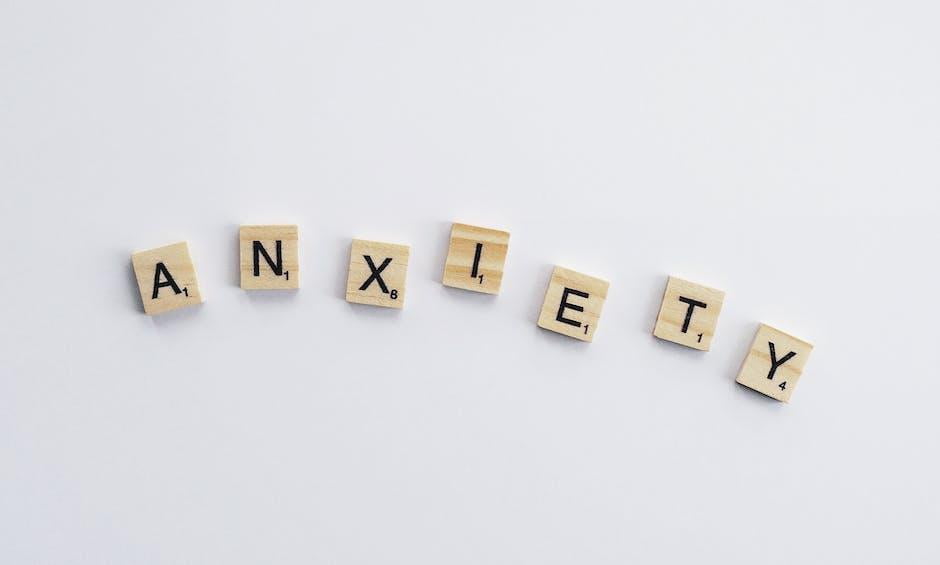The transformative impact of pet therapy on mental health is a topic that has been gaining traction in recent years. This form of therapy, often overlooked, has shown remarkable results in improving the mental well-being of individuals suffering from various mental health disorders. So, why should you keep reading? Because understanding the science and benefits behind pet therapy could change the way we approach mental health treatment.
Key Takeaways
- Pet therapy can significantly reduce stress levels and improve mood.
- It has shown positive results in specific populations like the elderly and individuals with severe mental health disorders.
- Pet therapy is not just beneficial for humans but also enhances the well-being of therapy animals.
- The future of pet therapy looks promising with growing recognition in therapeutic settings.
Introduction to Pet Therapy and Mental Health
Definition of Pet Therapy
Pet therapy, also known as Animal-Assisted Therapy (AAT), involves the use of animals to help individuals recover or better cope with health problems, particularly mental health disorders. This therapeutic approach is based on the bond between humans and animals, which can provide comfort, reduce feelings of isolation, and improve overall mental health.
Overview of Mental Health Issues Addressed by Pet Therapy
Pet therapy can address a wide range of mental health issues, including depression, anxiety, PTSD, and even severe disorders like schizophrenia. It has also been effective in improving the mental health of elderly individuals and those with chronic illnesses.

The Science Behind Pet Therapy
Physiological Impact on Stress
Reduction in stress levels
One of the most significant benefits of pet therapy is its ability to reduce stress levels. Interacting with animals has been shown to lower cortisol, the body’s primary stress hormone, and increase levels of the hormone oxytocin, which promotes feelings of happiness and relaxation (source).
Meta-analysis findings
A meta-analysis of various studies on pet therapy found consistent evidence of its effectiveness in reducing anxiety and improving mood, further supporting the physiological impact of pet therapy on stress reduction (source).
Psychological Benefits
Decrease in anxiety and depression
Pet therapy has been found to decrease symptoms of anxiety and depression. The simple act of petting an animal can provide a sense of calm and security, helping individuals to manage these conditions more effectively.
Improvement in mood and emotional state
Beyond reducing anxiety and depression, pet therapy can also improve an individual’s overall mood and emotional state. The unconditional love and companionship provided by animals can significantly enhance a person’s sense of well-being.

Pet Therapy in Specific Populations
Elderly Patients with Mental Illness
Improvement in mental health
For elderly patients suffering from mental illnesses, pet therapy can provide a unique form of comfort and companionship. It can help reduce feelings of loneliness and isolation, common among this population, and improve their overall mental health.
Enhancement of overall well-being
Moreover, pet therapy can enhance the overall well-being of elderly patients by providing them with a sense of purpose and responsibility, further contributing to their mental health improvement.
Individuals with Severe Mental Health Disorders
Suitability of pet therapy
For individuals with severe mental health disorders, pet therapy can be a suitable therapeutic approach. The non-judgmental nature of animals can provide a safe and comforting environment for these individuals to express their feelings and emotions.
Observed benefits in symptom management
Several studies have observed the benefits of pet therapy in managing symptoms of severe mental health disorders. These include reduced agitation, improved social interactions, and enhanced overall mood (source).

Methods and Implementation of Pet Therapy
Different Methods of Pet Therapy
One-on-one sessions
One-on-one sessions involve a therapist, a patient, and a therapy animal. These sessions are tailored to the individual’s needs and can provide a safe and comfortable environment for the patient to interact with the animal.
Group therapy settings
In group therapy settings, multiple patients interact with one or more therapy animals. This method can facilitate social interactions and help individuals develop their social skills.
Considerations for Implementing Pet Therapy
Choosing the right animals
Choosing the right animals for therapy is crucial. The animals should be calm, patient, and comfortable in various settings. They should also be well-trained to handle different situations and patient behaviors.
Training and safety protocols
Proper training and safety protocols are essential to ensure the effectiveness and safety of pet therapy. This includes regular health checks for the animals and training for the therapists to handle the animals effectively.

Mutual Benefits of Pet Therapy
Benefits to Participants
Reduction in loneliness
Pet therapy can significantly reduce feelings of loneliness among participants. The companionship provided by the animals can provide a sense of belonging and comfort.
Facilitation of social interactions
Pet therapy can also facilitate social interactions among participants. It can help individuals develop their social skills and build relationships with others.
Benefits to Animals
Enhanced well-being of therapy animals
Pet therapy is not just beneficial for humans. It also enhances the well-being of therapy animals. The attention and care they receive from the participants can improve their health and happiness.
Reciprocal relationship dynamics
The relationship between therapy animals and participants is reciprocal. The animals provide comfort and companionship to the participants, and in return, they receive care and affection.
Future Prospects and Expansion of Pet Therapy
Growing Recognition in Therapeutic Settings
Pet therapy is gaining recognition in therapeutic settings. More and more therapists are incorporating pet therapy into their treatment plans, recognizing its effectiveness in improving mental health. This growing recognition is paving the way for the expansion of pet therapy in mental health treatment.
Potential Areas for Further Research and Application
There are still many potential areas for further research and application of pet therapy. These include its effectiveness in treating other mental health disorders, its impact on physical health, and the best methods for implementing pet therapy.

Conclusion
Summary of Benefits
In conclusion, pet therapy has a significant impact on mental health. It can reduce stress levels, improve mood, decrease symptoms of anxiety and depression, and enhance overall well-being. It is beneficial for specific populations like the elderly and individuals with severe mental health disorders. Moreover, pet therapy also benefits the therapy animals, enhancing their well-being.
Encouragement for Further Exploration and Adoption in Mental Health Practices
Given these benefits, it is encouraged to further explore and adopt pet therapy in mental health practices. As we continue to understand the human-animal bond, we can harness its power to improve mental health and well-being.
As we delve deeper into the world of therapy, it’s worth exploring other therapeutic approaches as well. For instance, art therapy and mindfulness-based therapy have also shown promising results in supporting emotional well-being. Similarly, music therapy has been effective in supporting emotional well-being. Understanding the role of a psychotherapist can also be beneficial in navigating the world of mental health treatment. Lastly, understanding the impact of trauma-focused therapy on PTSD symptoms can provide valuable insights into the treatment of this disorder.
Everything You’ve Ever Wondered: The Soothing Paw-sibilities of Pet Therapy on Mental Health FAQ
What is pet therapy and how does it work?
Pet therapy, also known as animal-assisted therapy, involves the use of animals to help people recover or cope with health problems, including mental health issues. It works by promoting physical, emotional, and social well-being, leveraging the natural bond between humans and animals. Interacting with pets can increase levels of the stress-reducing hormone oxytocin and decrease production of the stress hormone cortisol, leading to a calming effect on the individual.
Can pet therapy help with anxiety and depression?
Yes, pet therapy can be particularly beneficial for individuals experiencing anxiety and depression. The presence of a pet can offer companionship, reduce feelings of loneliness, and provide unconditional love, which are all factors that can significantly alleviate symptoms of anxiety and depression. Engaging with animals can also distract the mind from stress and worries, fostering a sense of peace and relaxation.
What types of animals are commonly used in pet therapy?
While dogs and cats are the most common animals used in pet therapy, a wide range of animals can serve therapeutic purposes. This includes horses, rabbits, birds, guinea pigs, and even farm animals like goats and sheep. The key is the animal’s ability to interact safely and comfortably with humans.
Is pet therapy suitable for everyone?
Pet therapy can be beneficial for many people, but it’s not suitable for everyone. Individuals with certain allergies, fears, or phobias of animals might not find pet therapy helpful. Additionally, the success of pet therapy also depends on the person’s openness to the experience and the specific health condition being addressed. It’s always recommended to consult with a healthcare provider before starting any new therapy.
How can I access pet therapy?
Pet therapy can be accessed through various channels. Many hospitals, nursing homes, and mental health centers offer pet therapy programs. Additionally, there are organizations and private practitioners who specialize in animal-assisted therapy. It’s important to seek out certified therapy animals and handlers to ensure a safe and effective experience.
Are there any risks associated with pet therapy?
While pet therapy is generally safe, there are potential risks, such as allergic reactions or injuries from animal bites or scratches. It’s crucial that therapy animals are well-trained and properly screened for behavior and health to minimize risks. Participants should also be guided on how to interact with the animals safely.
Can pet therapy replace traditional mental health treatments?
Pet therapy should not be seen as a replacement for traditional mental health treatments but rather as a complementary approach. It can be an effective adjunct to medications, psychotherapy, and other forms of treatment, offering additional benefits that enhance overall well-being.
What are the long-term benefits of pet therapy?
The long-term benefits of pet therapy can include improved mood, reduced stress levels, better communication skills, and increased empathy and socialization. For individuals with chronic mental health conditions, pet therapy can offer a consistent source of support and comfort, contributing to long-term management of symptoms.



